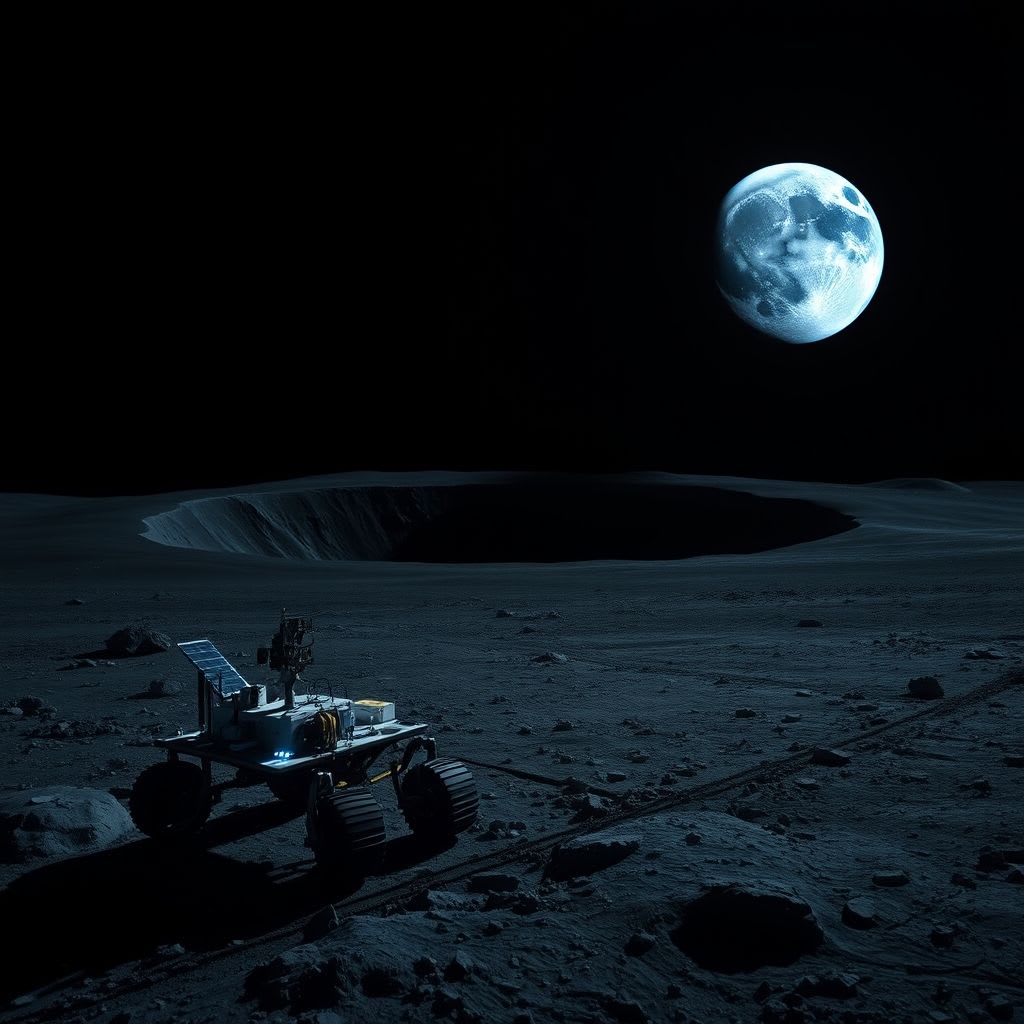When we picture the Moon, most of us imagine a barren, silent world: endless gray plains, craters stretching to the horizon, and a pitch-black sky untouched by clouds. Water seems like the last thing you’d expect to find there. For decades, that was the assumption confirmed, it seemed, by the first lunar missions, which found no obvious signs of liquid water.
But space exploration has a habit of surprising us. In the early 21st century, scientists made a groundbreaking discovery: the Moon isn’t completely dry. In fact, it contains water frozen, hidden, and waiting to be found. This revelation could change the entire future of human space travel.
Where Is the Water Hiding?
You won’t find rivers or shimmering lakes on the Moon. Instead, water exists in much subtler forms: as ice trapped in shadowed craters, or as tiny molecules clinging to lunar dust, known as regolith. Scientists have identified several key sources:
Polar Craters – At the Moon’s north and south poles lie deep craters where sunlight hasn’t reached for billions of years. Temperatures there drop to –200°C (–328°F), allowing ice to survive for eons.Regolith Across the Surface – Some water molecules are bound directly to lunar dust, formed when solar wind interacts with the Moon’s surface.Subsurface Ice – Deep beneath the surface, pockets of ice may exist in fractures or porous rock layers.
How to Extract Lunar Water
Finding the water is only half the battle. Extracting it from the Moon’s harsh environment is another challenge entirely. The key is to heat the ice, turn it into vapor, and then condense it into liquid. But under lunar conditions, this requires both creativity and advanced technology.
Here are some of the most promising methods engineers are exploring:
Drill-and-Vapor Capture – A robotic drill bores into the Moon’s surface, heating samples so the ice turns into steam. The vapor is collected in tanks and cooled into liquid water.Solar Furnaces – Giant mirrors focus sunlight onto ice-rich patches, causing the frozen water to evaporate. The resulting vapor is funneled into storage systems.Microwave Heating – Beams of microwaves can heat the subsurface directly, melting ice where it lies and allowing water to be extracted without heavy drilling equipment.
Why Moon Water Is a Game-Changer
Mining water on the Moon isn’t just about giving astronauts something to drink it’s about making lunar and deep-space missions sustainable. Water can serve multiple crucial purposes:
Life Support – Drinking, cooking, and hygiene for astronauts living on the Moon.Food Production – Hydroponic greenhouses could grow vegetables for long-term missions, using recycled water.Rocket Fuel – Water can be split into hydrogen and oxygen, the same propellants used in rockets. Having a “refueling station” on the Moon could make travel to Mars and beyond far cheaper and faster.In other words, water isn’t just a resource—it’s the foundation for building a permanent human presence beyond Earth.
The Challenges Ahead
Of course, mining water on the Moon isn’t simple. The obstacles are as vast as space itself:
Extreme Temperatures – The polar craters that hold ice are colder than Pluto, making them extremely difficult for machines to operate in.Lunar Dust – Moon dust is sharp, clingy, and abrasive. It can damage equipment, jam moving parts, and even be hazardous to human lungs.Power Supply – The Moon lacks a reliable, natural energy source. Solar power works, but long lunar nights last about 14 Earth days. Nuclear reactors may be necessary for continuous operations.
The Next Steps
The race to tap into lunar water has already begun. NASA, the European Space Agency (ESA), China, and India are all preparing missions to map and test water deposits more precisely. NASA’s Artemis program plans to land astronauts near the Moon’s south pole in the coming years, bringing advanced robots to test water extraction on-site.
If these missions succeed, we could see the first operational lunar water mining stations within a few decades. Those facilities wouldn’t just serve astronauts they could become fueling depots for spacecraft heading deeper into the solar system.
Final Thoughts
Water on the Moon is not a science-fiction fantasy. It’s real, it’s valuable, and it could be the cornerstone of humanity’s future in space. The technology to harvest it will be challenging to perfect, but the rewards life support, sustainable fuel production, and the ability to explore the cosmos more freely make it worth the effort.
In the silent, shadowed craters of the Moon, frozen crystals may be waiting to write the next chapter of human history one where the Moon becomes not just a destination, but a gateway to the stars.
